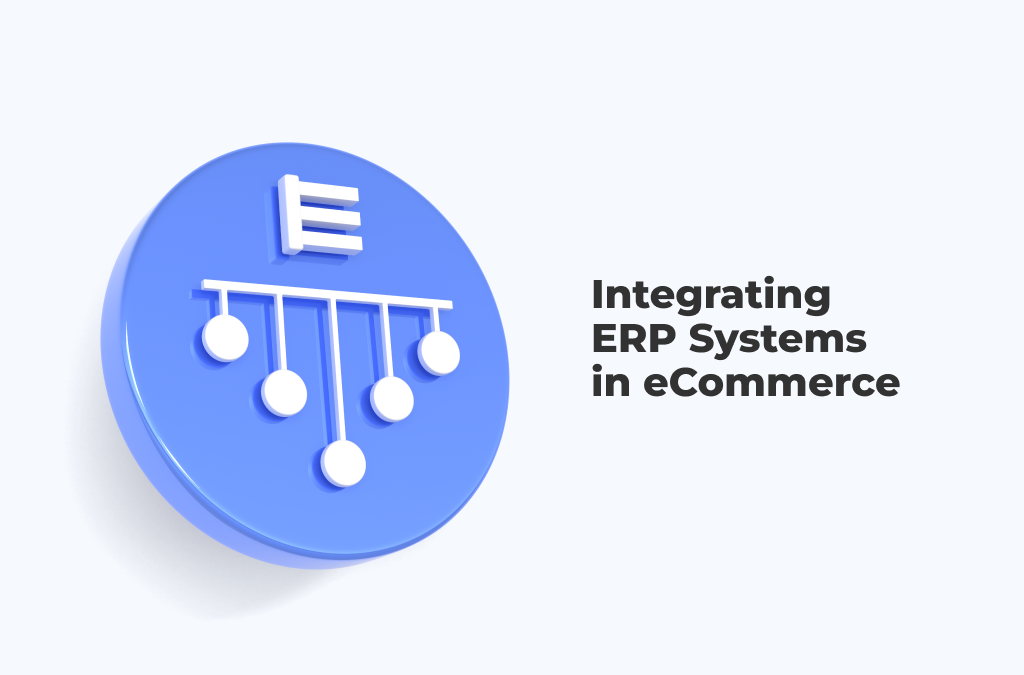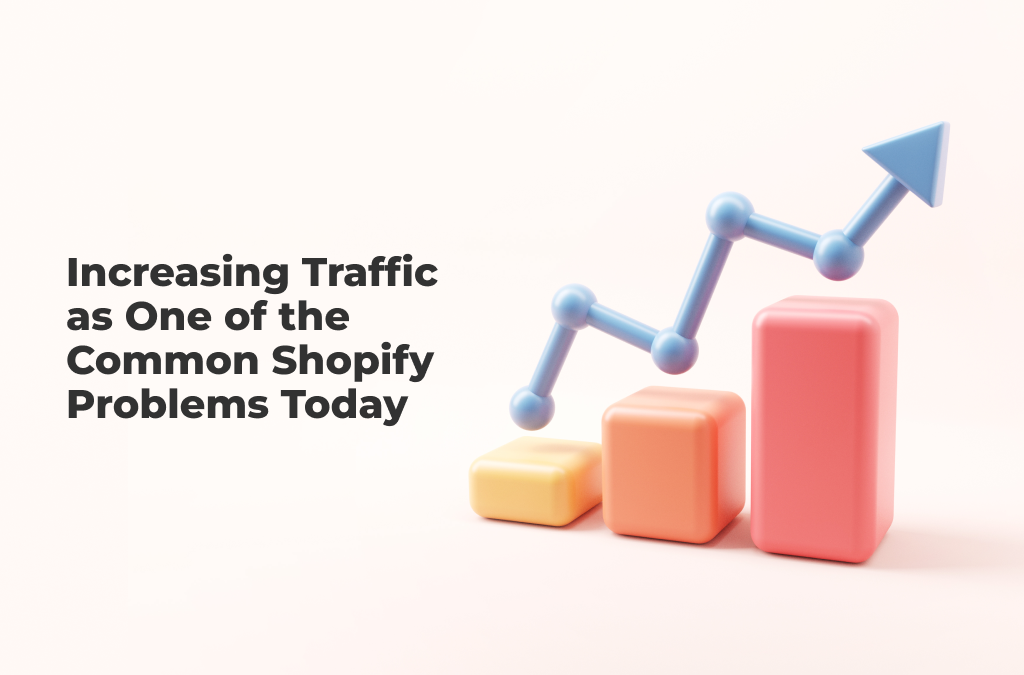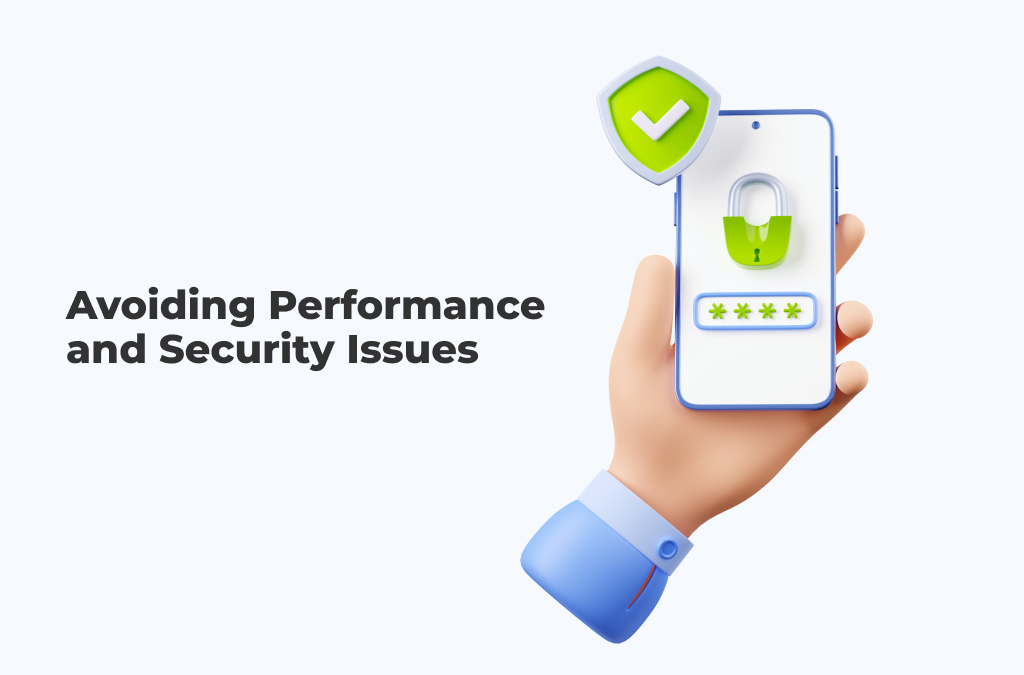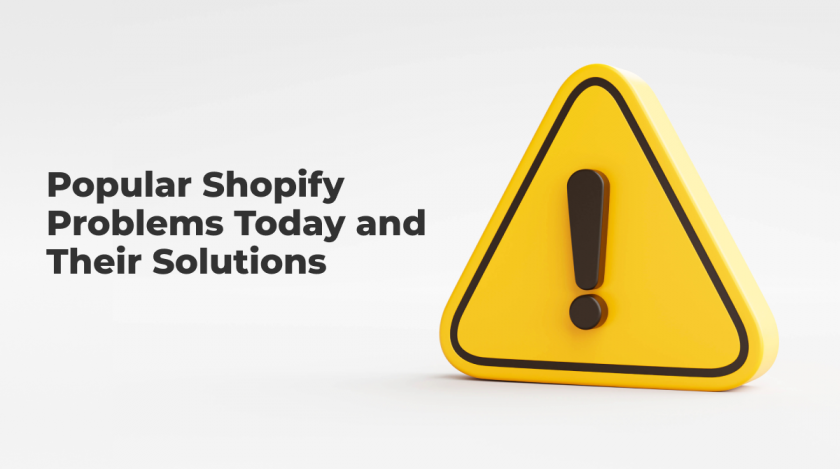Popular Shopify Problems Today and Their Solutions
Shopify problems today are challenges that store owners need to overcome to make their stores successful. Regardless of your experience in this sphere, it is vital to discover the best approach to make your eCommerce website stand out. Even though developing and launching a store with Shopify in 2023 is easy, every store owner faces certain issues afterward. They are usually connected with driving traffic and increasing sales. However, these are just a small part of the challenges and tasks you may have to deal with as a merchant. To make your store grow and attract new customers it is essential to understand how to deal with these tasks and overcome the mentioned challenges.
As you may have guessed, today we are going to talk about popular Shopify and the ways to solve them. For this post, we have picked the top 7 issues that merchants have with the #1 eCommerce platform. From ERP integration to security problems, we’ll take a detailed look at each of them. Moreover, in this article, you’ll find clear and easy-to-understand instructions for solving each of them. However, before solving them, we need to understand what these issues are.
What are the Top 7 Shopify Problems Today?
Running a store based on Shopify often seems a big and complex task. This is especially true if you haven’t previously worked with eCommerce platforms. Even a store with an original idea and great potential can be lost among generic stores. One of the ways to change it is by increasing traffic and choosing the right marketing strategy. Moreover, before getting started with Shopify, it is recommended to know the basics of owning the store. This will help you avoid many Shopify problems today. Finally, it would be best if you got to know your clients and what they may be looking for. Establishing a proper partnership with your suppliers is also vital. Such an approach may help you avoid many of the issues connected with:
- ERP integration;
- Automating repetitive tasks;
- Multi-channel integration;
- Getting more products;
- Driving traffic to your Shopify store;
- Increase in sales;
- Performance and security issues.
Handling the possible issues will help you not just make your store successful. It will also give you a new perspective on getting the most out of it. Moreover, you can plan your store’s development further. Choosing the right marketing strategy also helps to harness the potential of Shopify. Properly dealing with a range of eCommerce tasks you may face will increase your customer base, maintain your online store, and maximize your profits as a result.

Integrating ERP Systems in eCommerce
Connecting diverse business processes is one of the first steps required for any successful online store. ERP (enterprise resource planning) allows you to do just that. It offers software that allows you to synchronize various aspects of eCommerce business. Integrating such applications into the workflow properly is one of Shopify problems today. From sales to supplies and logistics, ERP allows you to control everything happening in your store at any time. However, it’s impossible to use this system correctly without integrating it into each process first. This will help you keep track of all procedures happening in your business. Moreover, you won’t need to do it all yourself.
Unfortunately, Shopify isn’t suited for controlling tasks that aren’t directly connected with eCommerce and sales. Still, it supports interaction with the world’s popular ERP systems. Some examples are Microsoft Dynamics, Oracle Netsuite ERP, and Sage X3. While Shopify has a variety of suitable apps that support integration with these systems, additional configuration is still required. It is done best with the help of a qualified expert. Many ERP system developers provide extensive assistance to their clients. Furthermore, it is necessary to plan the integration process. This will simplify the transfer of multiple tasks within your business to a new system. Your team needs to be aware of it before ERP integration is launched at your store. Proper planning will also help you optimize the diverse business processes to fit the updated model of your store.
Shopify Problems Today: Task Automation
One of the notable Shopify problems today is the automation of routine tasks. Any eCommerce website owner inevitably faces the need to improve their performance through streamlining. Stores with an extensive number of products may find it nearly impossible to update thousands of goods manually. Also, many online stores often need to plan catalog updates. This is especially true for those businesses that regularly organize sales and special offers for their clients.
Proper automation solves all these issues easily. Thanks to the variety of related software available on the Shopify App Store, you can not only manage your inventory and shipping procedures more effectively. Your employees will appreciate it, too. One of many tasks that streamlining & automation solve is improved quality of remote work. Besides, it helps with collecting data and building your customers’ purchase history. Later, it can be useful when creating customized special offers for every customer. It is quite obvious that all clients prefer a personal approach to their needs. Thus, it can positively influence your reputation and the store’s popularity.

Using Multiple Marketing Channels to Advertise Your Store
With the development of eCommerce, merchants also need to promote their products more effectively. From social apps to messengers, you can now see eCommerce offers everywhere. This opens the way to new clientele as well as unprecedented partnerships. Sometimes a store owner needs to manage several channels or marketplaces at once. In this case, it can be considered one of Shopify problems today. The same can be said about working in different storefronts created for a single shop. This happens when you must sell your goods on different Shopify stores catering to customers with varied languages, currencies, or interests. The channels used in marketing and eCommerce may include:
- Your storefront;
- Popular marketplaces;
- E-mail newsletter platforms;
- Pages on social networks;
- Search engines;
- Influencers and bloggers.
One of the recommended solutions for Shopify store owners is to apply the built-in features of the platform. For example, you can use a diverse selection of applications to manage your social channels and connect marketplaces to your store. Moreover, it is often even more beneficial to use a physical retail store as one of the channels. It will not only provide you with a space to market your online store’s products. This way you can also provide your customers with a location to shop safely. In a physical store, you can also set up a pickup point. There your online customers will be able to quickly receive what they ordered without overpaying for shipping.
Extending the Product Catalog on Shopify
With modern content management systems in eCommerce, updating your product catalog may seem a simple task. Still, for bigger online stores, it is one of the topical Shopify problems today. For example, many websites often need to update small pieces of content at once. The same is also true for online stores that provide their clients with thousands and sometimes even millions of products. This issue becomes even more obvious when you update existing goods and add new ones. When using CSV files to add products, a single mistake in descriptions may cost you.
This problem is especially obvious when you need to manage several Shopify storefronts with extensive product selection. In this case, inventory management software can help you complete your catalog more effectively. But what should you do if you don’t have a lot of your products to sell online? There are several solutions to this problem. For example, you can try importing products from other suppliers or buying wholesale products and then reselling them in your store. Other options include dropshipping and establishing a partnership with a manufacturer to sell their products using your brand.

Increasing Traffic as One of the Common Shopify Problems Today
For beginners in eCommerce, attracting new customers is often one of the biggest Shopify problems today. Unfortunately, without a loyal client base, it is nearly impossible to get instant profit from selling online. Alongside getting enough products in their stores, many merchants struggle with attracting potential customers to their newly established eCommerce websites. Even with a considerable amount of traffic, no one can guarantee a matching sales volume. For that reason, it is always necessary to work on both discoverability and meeting your customers’ needs.
There are multiple marketing and promotion techniques used outside of eCommerce. However, they also work well for online stores. From SEO to SMM and online advertising, there are diverse ways to make your store more visible online to your potential clients. But first, you need to know exactly who your target audience is. Such an approach can drastically improve your discoverability chances. It will also make your store a desired location for your customers. Combine it with properly planned content marketing & SEO strategy to attract even more attention to your Shopify store. Chances are you may even find new partners and suppliers this way.
Improving Sales Through Online Marketing and Research
As we’ve mentioned, the issues of gaining more traffic and increasing sales are connected. Low sales are considered one of Shopify problems today. Both new and experienced merchants face this issue with their stores. Even if you have proper discoverability and product variety, a sales decrease is still possible. This can not only negatively impact your business. It also makes further development of your store more complicated. Additionally, converting potential customers into actual clients is a great way to improve your brand. However, it needs to be planned and executed properly.
Merchants often use similar methods to increase sales when compared to driving traffic. A few such examples are targeted ads on social networks and e-mail marketing. These are good ways to advertise your products to the right audiences. Marketing research data and analytical tools of Shopify can also help. Using them leads to a result-oriented marketing campaign. Also, marketplaces visited the most by your target audience can give you an awesome boost in sales. Tracking the reviews and opinions of your current and potential customers can provide valuable data for your future campaigns. It also has a considerable influence on marketing strategies in eCommerce.

Avoiding Performance and Security Issues
Lastly, we’d like to talk about performance and security issues as major Shopify problems today. Protecting the data of customers has always been the primary task for any eCommerce business. Better protection results in higher trust and a stainless reputation for any online store. The same can be said about storefront performance. Faster loading times mean a better retention percentage as well as a positive user experience. Many stores spend a lot of money to ensure the best UX for their clients. But what’s more important, online store owners strive to protect their customers’ data, such as:
- Basic data (name, e-mail address, date of birth);
- Interaction data (website visits, likes & shares, conversions);
- Behavioral data (previous purchases, devices, average order value);
- Attitudinal data (product desirability, purchase criteria, preferences).
Various safety components and plugins are designed to avoid this problem. But you can’t rely just on third-party software to do this task. It’s equally important to keep an eye on your website’s performance metrics. If you are creating a new store, think about better security from the start. When using Shopify apps, choose them by reviews, ratings, and statistics. Additionally, it is recommended to optimize the product images for the Web. This way you’ll quickly improve the loading times of your website. Investing in backup services and solutions for your store is also a smart choice. This is especially useful if you work with several stores at once.
Common Shopify Problems Today: Conclusion
We hope these solutions to Shopify problems today were useful to you. The modern eCommerce industry is constantly developing. It’s important to keep track of its recent changes to avoid unwanted results. Undoubtedly, Shopify is one of the most popular and trusted platforms for online shops. Still, merchants need to constantly work on their store’s stability and discoverability. There are also multiple ways of increasing sales and improving the product catalog. Our team is always ready to help you with tips and recommendations for your business.
Feel free to visit our blog for more useful articles for your business. There we regularly publish eCommerce theme reviews. Also, our authors have informative guides on everything concerning Shopify, online marketing, and web design. To view Shopify themes by Zemez, we invite you to take a look at our website. There you can find the next theme for your store that will help you build a unique storefront. Our theme portfolio also has lots of great solutions for your next project. And for those who prefer to get news and updates via social networks, we recommend following us on Instagram and Facebook. With Zemez, you can stay updated with all trends and innovations in eCommerce and Shopify.















